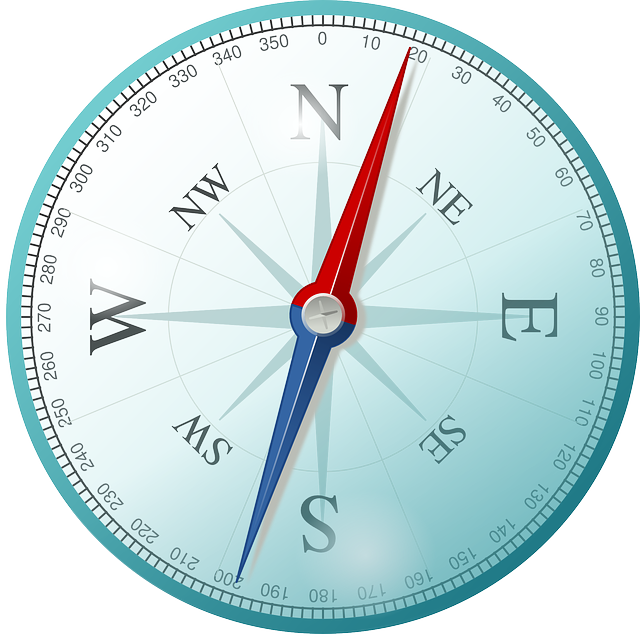Physical Geography encompasses a diverse array of disciplines, including geology, meteorology, climatology, hydrology, and oceanography, among others. Within this rich tapestry of scientific fields, physical geographers employ a myriad of methodologies to delve into the intricate features of Earth’s surface, harnessing tools such as satellite imagery, aerial photographs, and data gleaned from remote sensing.
The comprehension of land configurations and their genesis plays a pivotal role in prognosticating natural calamities like seismic tremors and volcanic outbursts. This composition aims to elucidate every facet associated with the subdomains that constitute the realm of physical geography.
From the bedrock of geology to the ethereal domain of climatology, physical geography is an amalgamation of multifarious disciplines, each weaving its thread into the tapestry of our understanding of Earth. Among its cohort of methodologies, physical geographers adroitly wield an arsenal of techniques, ranging from the scrutinization of satellite depictions to the interpretation of aerial snapshots and the assimilation of intelligence conveyed through remote sensing.
In deciphering the enigma of landforms and their genesis, a formidable key emerges – the ability to foresee nature’s convulsions, from quaking tectonic shifts to the fiery theatrics of volcanic upheavals. This treatise embarks on an expedition to unfurl the panorama of knowledge encapsulating the sub-realms that branch out within the embrace of physical geography.
Unveiling Earth’s Physical Mysteries: Exploring the Realm of Physical Geography
Dive into the captivating realm of physical geography, a multifaceted discipline that delves into the intricate tapestry of Earth’s surface features, climate patterns, and invaluable natural resources.
Physical geography is a multifarious and engrossing field of study that unravels the intricate secrets of our planet’s physical makeup. It embarks on an expedition through various captivating subjects, encompassing glaciology – the profound exploration of glaciers and ice formations; climatology – an in-depth analysis of climatic systems and atmospheric phenomena; pedology – the meticulous examination of soils and their formation processes; hydrogeology – a captivating voyage into the subterranean world of groundwater dynamics; meteorology – an insightful investigation into the intricate dance of weather patterns; oceanography – a mesmerizing exploration of the boundless oceans and their teeming ecosystems; and geomorphology – an awe-inspiring journey through the ever-evolving landscapes that grace our planet’s surface.
Embracing the spirit of scientific exploration, geographers employ the robust tools of geoscience to unearth the mysteries enshrouding diverse terrains. With a keen eye and analytical prowess, they decipher the intricate geological processes that have sculpted the mountains, carved the valleys, and shaped the Earth’s breathtaking vistas. Their scientific acumen unveils the ancient stories etched in rock formations, the secrets concealed within layers of soil, and the whispers of the winds that have shaped deserts and forests alike.
Yet, the scope of physical geography extends beyond unraveling nature’s enigmas. Geographers, as modern-day cartographers of knowledge, illuminate the profound interplay between humanity and its surroundings. As custodians of our planet’s fragile ecosystem, they cast their gaze upon pressing issues such as global warming, scrutinizing the intricate dance of temperature and greenhouse gases, seeking to comprehend its reverberations across diverse landscapes. With meticulous dedication, they dissect the causes and consequences of extreme weather events, deciphering the intricate ballet of atmospheric forces that unleash hurricanes, tornadoes, and blizzards upon our world.
In the unfolding narrative of human-environment interaction, geographers act as vigilant sentinels, closely observing the tragic saga of environmental degradation. Armed with empirical evidence, they chronicle the footprints of human activity on landscapes, from deforestation’s scars to urban sprawl’s encroachments. In this era of heightened environmental consciousness, the insights garnered from the study of physical geography stand as beacons, guiding policy decisions, and inspiring collective action to safeguard the delicate balance between humanity and the Earth.
Sub-Disciplines Unveiled: Exploring the Rich Tapestry of Physical Geography
Physical Geography, a captivating field of scientific inquiry, unfurls an intricate web of sub-disciplines that unravel the Earth’s profound secrets. Embarking on a journey through these realms, we navigate the diverse landscapes, delve into the oceanic abyss, and decipher the echoes of ancient climates. Each sub-discipline is a unique lens, focusing on a distinct facet of our planet’s physicality and dynamics. Let’s embark on this captivating exploration of the sub-branches of Physical Geography:

1. Hydrology & Hydrography: Navigating the Watery Realm
Hydrology, the sentinel of Earth’s aqueous symphony, orchestrates the study of water’s enigmatic dance within our natural world. Concurrently, hydrography paints intricate portraits of aquatic realms, charting the depths, currents, and wave symphonies. This sub-discipline unveils the interconnectedness of water bodies, deciphering their intricate tales of ebb and flow, while hydrography crafts meticulous maps of aqueous expanses, unveiling the hidden contours beneath the surface.
2. Oceanography: Plunging into the Abyssal Realms
Oceanography, a symphony of exploration beneath the azure veil, probes the mysteries of vast oceans and the life they cradle. It delves into the ocean’s physical traits, its currents’ eloquent narratives, and the vibrant ecosystems flourishing within. Akin to a cosmic voyage, oceanography embarks on an odyssey to fathom the interplay between water, organisms, and Earth’s intricate climatic mechanisms.
3. Coastal Geography: Where Land and Sea Embrace
Coastal geography is a voyage to the ephemeral boundary between terra firma and the endless sea. This sub-discipline scrutinizes the choreography of waves, tides, and currents as they caress the land, shaping coastlines and creating dynamic habitats. Encompassing natural and human dimensions, it uncovers the intricate symphony between the elements, offering insights into erosion, sedimentation, and the symbiotic relationship between man and the coastal realm.
4. Glaciology: Chronicles of Frozen Frontiers
Glaciology, a chronicle of frozen realms, narrates the tales of Earth’s polar enigmas. From the grandeur of alpine glaciers to the sprawling expanses of continental ice sheets, it unearths the enigmatic dance of ice and time. With climate change as a backdrop, glaciology becomes a sentinel, deciphering the vital signs of these frozen giants and their role in shaping Earth’s narrative.
5. Environmental Management: Guardians of Tomorrow’s World
Environmental management emerges as a vanguard for safeguarding our planet’s legacy. Rooted in the nexus of natural resources, human interactions, and sustainability, this sub-discipline orchestrates an interdisciplinary ballet. Beyond the realms of natural sciences, it waltzes with geography, economics, and sociology, channeling its energy to comprehend the transformative cadence of environmental change and its repercussions on myriad facets of life.
6. Biogeography: Unveiling Earth’s Ecological Canvases
Biogeography, akin to an artist’s palette, paints the vivid distribution of life across Earth’s canvas. In a symphony of genetic intricacies, it maps the past and foretells the future of diverse organisms. This sub-discipline peers into the genetic archives, illuminating the bonds between populations and discerning the geographic journeys of life forms. Mathematical tapestries and molecular melodies weave together to unveil the biogeographic tale.
7. Climatology & Meteorology: Decoding Nature’s Weather Vignettes
Climatology and meteorology, akin to time travelers, decipher the ever-shifting atmospheres above. Climatology, a historian, unravels the annals of weather patterns across epochs, while meteorology, a contemporary observer, scrutinizes the tapestry of currents, temperature gradients, and atmospheric whims. Together, they narrate the mesmerizing tale of Earth’s climatic symphony, a dance that shapes our world in profound ways.
8. Geodesy: Capturing Earth’s Sculpted Elegance
Geodesy, an artisan’s compass, traces the contours of Earth’s physical visage with mathematical finesse. Through the prism of geometrical artistry, it bequeaths us detailed maps, enabling us to navigate the intricate landscape with precision. This sub-discipline unfurls the intricate geometry of our planet’s surface, sculpting a masterpiece of spatial understanding that informs engineering, exploration, and beyond.
9. Geomorphology: Unearthing Earth’s Sculpted Tale
Geomorphology, a geological storyteller, whispers the tales etched in Earth’s surface. As custodian of landforms, it unveils the intricate narratives of mountains, valleys, and underwater realms. With a touch of classification, it separates terrestrial and marine landscapes, painting a vivid tapestry of Earth’s formative journey through time.
10. Landscape Ecology: Harmonies of Ecosystems
Landscape ecology, a conductor of ecological harmonies, orchestrates the dance of life within diverse habitats. It deciphers the interconnected ballet of plants, animals, and humans, examining how their choreography shapes the land. Amidst urban sprawls and pristine wilderness, this emerging field studies the delicate symphony between nature and civilization.
11. Palaeogeography: Echoes of Ancient Earth
Palaeogeography, an archaeologist of Earth’s past, unearths the whispers of ancient climates and geological epochs. In partnership with geology and geomorphology, it unravels the stories scripted across time. With precision, it sifts through layers of the Earth’s narrative, painting portraits of primordial landscapes and climates that continue to echo in the present.
12. Pedology: Delving into Earth’s Skin
Pedology, an explorer of Earth’s terrestrial skin, peels back the layers of soil to reveal its intricate composition. Akin to an alchemist, it deciphers the minerals, morphology, and origins of soil, an often-overlooked foundation of life. Its investigations touch upon a multitude of dimensions, from agricultural sustainability to ecosystem health.
13. Quaternary Science: Unraveling Ice-Age Enigmas
Quaternary science embarks on an expedition to the frigid heart of Earth’s history—the Ice Age. A tapestry woven with fossils, rock strata, and climatic enigmas, it reconstructs epochs when glaciers sculpted continents, sea levels surged and receded, and ecosystems danced to the rhythms of changing climates. This sub-discipline, an archaeologist of epochs past, narrates the saga of Earth’s icy reverie.
In the grand tapestry of Physical Geography, these sub-disciplines converge to unveil a panoramic vista of our planet’s intricacies. Each facet, a luminary in its own right, contributes to our collective understanding of Earth’s past, present, and future. Their harmonious interplay offers a profound symphony that resonates across scientific, ecological, and societal realms, fostering a deeper connection between humanity and the intricate ballet of our planet’s physicality.
Unveiling the Crucial Role of Physical Geography
The significance of physical geography lies in its pivotal role in shaping the life-sustaining capacity of various regions. At its core, physical geography delves into the intricate interplay of elements such as elevation, gradient, as well as the geographic coordinates of latitude and longitude, orchestrating their impact on the Earth’s terrain and consequently molding the tapestry of human endeavors.
Through the lens of physical geography, we unravel the complex mechanisms that underpin the Earth’s surface, deciphering the ways in which these dynamic forces orchestrate the potential for sustaining life across diverse landscapes.
Conclusion
Physical geography delves into the exploration of Earth’s natural attributes, encompassing an array of phenomena, features, and processes that intricately intertwine and influence one another. This captivating field embraces an array of subjects, ranging from the intricate tapestry of soil compositions and the ever-shifting climatic nuances, to the lush symphony of flora and fauna that grace the planet’s surface. Additionally, it extends its inquisitive gaze to the aqueous expanses that adorn Earth’s visage, as well as the ethereal dance of elements within its atmospheric embrace.
